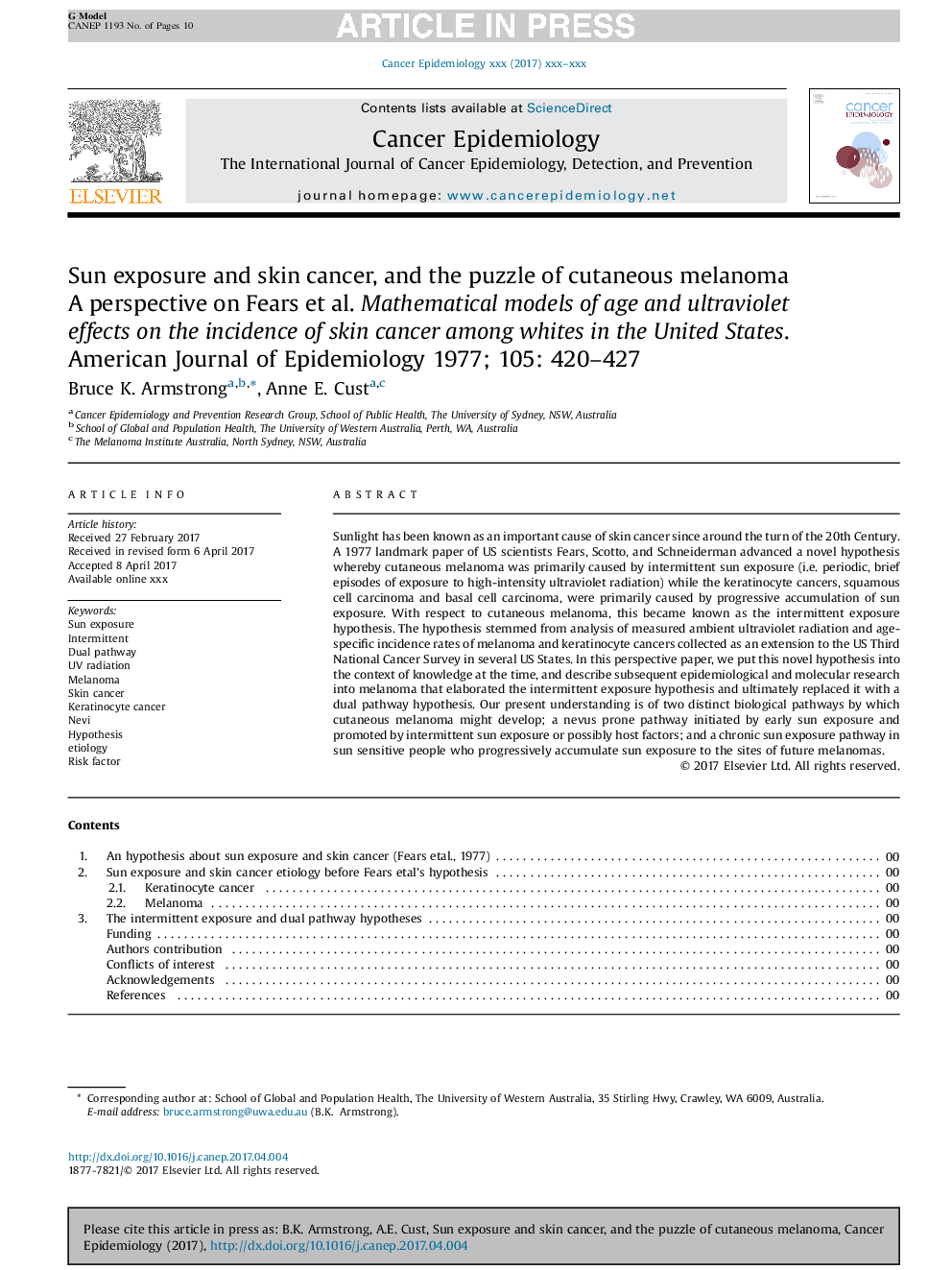| Article ID | Journal | Published Year | Pages | File Type |
|---|---|---|---|---|
| 5524862 | Cancer Epidemiology | 2017 | 10 Pages |
Abstract
Sunlight has been known as an important cause of skin cancer since around the turn of the 20th Century. A 1977 landmark paper of US scientists Fears, Scotto, and Schneiderman advanced a novel hypothesis whereby cutaneous melanoma was primarily caused by intermittent sun exposure (i.e. periodic, brief episodes of exposure to high-intensity ultraviolet radiation) while the keratinocyte cancers, squamous cell carcinoma and basal cell carcinoma, were primarily caused by progressive accumulation of sun exposure. With respect to cutaneous melanoma, this became known as the intermittent exposure hypothesis. The hypothesis stemmed from analysis of measured ambient ultraviolet radiation and age-specific incidence rates of melanoma and keratinocyte cancers collected as an extension to the US Third National Cancer Survey in several US States. In this perspective paper, we put this novel hypothesis into the context of knowledge at the time, and describe subsequent epidemiological and molecular research into melanoma that elaborated the intermittent exposure hypothesis and ultimately replaced it with a dual pathway hypothesis. Our present understanding is of two distinct biological pathways by which cutaneous melanoma might develop; a nevus prone pathway initiated by early sun exposure and promoted by intermittent sun exposure or possibly host factors; and a chronic sun exposure pathway in sun sensitive people who progressively accumulate sun exposure to the sites of future melanomas.
Related Topics
Life Sciences
Biochemistry, Genetics and Molecular Biology
Cancer Research
Authors
Bruce K. Armstrong, Anne E. Cust,
